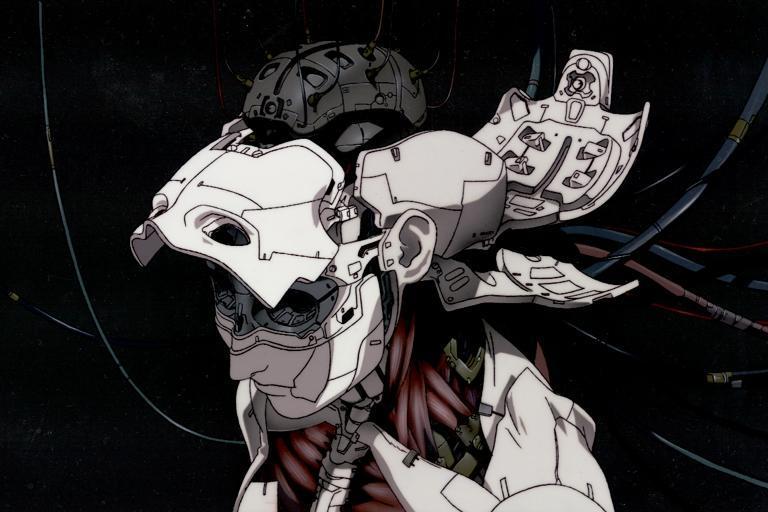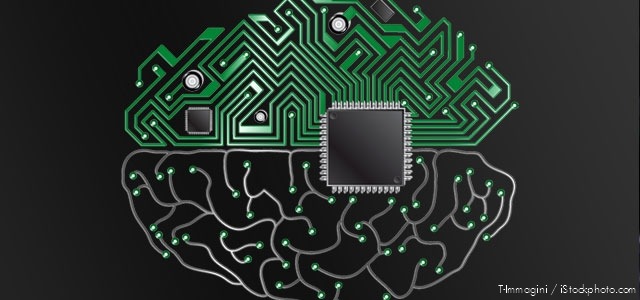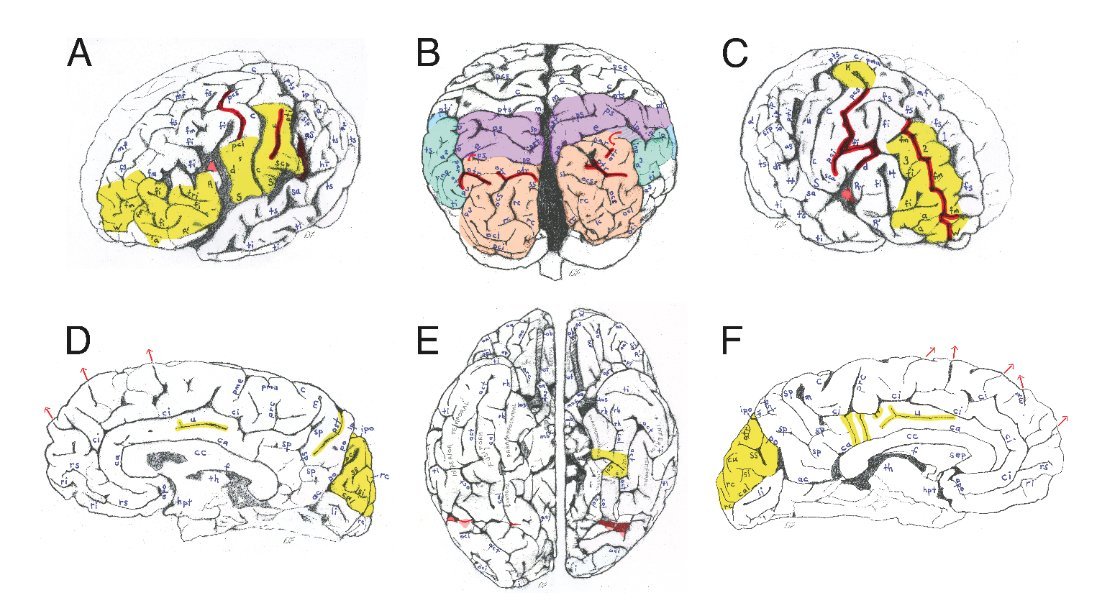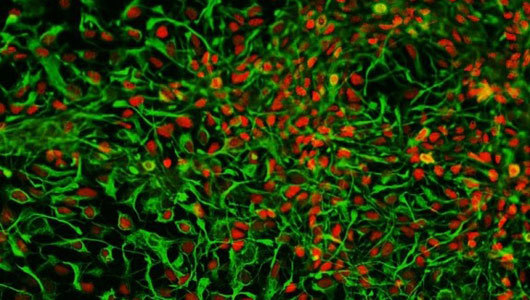The average American watches more than four hours of television per day (five times the amount dedicated to socialization!). It makes sense that it would change us, the same as doing anything for four hours a day changes you. Yet, it’s surprisingly hard to get people to accept this. But the science is pretty much overwhelming. Enough television rewires your brain in a bunch of unexpected ways. For instance …
#6. It Changes You, Even if You’re Too Young to Know What You’re Watching
It’s easy to assume that impressionable children can be affected by TV shows, but what about toddlers? They aren’t even aware of what’s going on around them. Besides, they don’t do a whole lot besides chew on furniture and inflate their diapers, so it’s not like they could be doing something better with their time.
Scientists tracked more than 1,000 29-month-old babies and their television habits and the effects of excess TV were downright startling — even after researchers accounted for all the other factors that would explain differences in behavior. The more television a child watched as a toddler, the more likely it was that he’d be fat, bullied, bad at math, inactive and prone to misbehavior in the classroom.
Again, that’s not a result of watching violent TV shows or anything else that would encourage them to do bad things. Not that a 3-year-old would be able to absorb those lessons anyway.
Nope, it’s just the act of watching television. And again, it’s not just that the type of parent who plants a kid in front of a TV all day probably also runs a bad household — the results hold up even if you account for all other factors in the kids’ upbringing.
And the research holds up around the world. A New Zealand study found that more hours of television viewed as a toddler led to a higher probability of dropping out of school later in life. In a stunning display of initiative, France has even banned shows from having children younger than 3 as their target audience, because French adults are the only ones allowed to have their intelligences insulted.
And while we’re on the subject, let’s get this one out of the way…
#5. Yes, TV Lowers Your Attention Span
Since television — especially children’s TV — is lightning-fast and loaded with stimuli, it isn’t outlandish to think that a person’s brain might become adjusted to that pace over time. When a teacher cannot supplement his or her lectures with dinosaurs and explosions, a child’s television-altered attention span may be so deprived that the child cannot stay focused.
But most of us who don’t buy into “the modern world is destroying the children!” alarmism have trouble believing that too much TV can actually rewire your attention span in any significant way.
But an Iowa State University study sure enough found that students who stare at a screen for more than two hours per day are twice as likely to be diagnosed with attention problems, which is awesome when you consider that the average amount of time a child spends watching television and playing video games is 4.26 hours a day.
The study followed 1,323 children in grades three through five and 210 college students. The results make it fairly hard to argue that television doesn’t literally change the way the human brain functions, with enough exposure. But even stranger, other studies have shown (just like with the example above) that the amount of television watched as an infant can affect attention habits later in life.
So again, if you want your kids to be able to pay attention to anything for longer than 38 seconds, you need to move into a hotel and wheel the television out onto the balcony like Craig T. Nelson in Poltergeist.
#4. It Alters Your Dreams
Television can change your dreams, and not just by making you wish you could master time travel to become an advertising executive in the 60s.
According to science, television can alter your actual dreams, the kind that happen while you’re asleep. Research has found that some people have monochrome dreams (that is, they dream in black and white), and it’s apparently all their televisions’ fault.
In a study of 50 people, half under 25 and the rest over 55, the subjects filled out a questionnaire related to the color of their dreams, their contentedness with their marriages and the colors of their televisions in their formative childhood years. Then the subjects were asked to keep a dream diary. Researchers found that while hardly any of the younger people dreamed in black and white (around four percent), a quarter of the older-than-55 group did. That is, the people who grew up with black and white televisions.
Scientists attribute this to hours of exposure to black and white images during the subjects’ formative years, but there is no way to know if the actual dreams were in black and white, or if the subjects just remember them as such due to years of visual training by their TV sets.
#3. It Deceptively Cures Loneliness
You might know people who get so wrapped up in a show that they forgo social interaction until they’ve caught up to the latest episode. The rest of us are probably waiting for the day when they realize they need actual friends for fun and emotional support, but that day may never come. Scientists have found that television, specifically the pseudo-relationships formed with TV characters, can drive away feelings of loneliness and rejection.
Using a combination of four studies, scientists have shown that television shows can instill a sense of belonging in people with low self-esteem who have been rejected by friends or family. This is called the social surrogacy hypothesis, which figures that in order to fill the emotional void of social deprivation, a person will establish relationships with fictional characters (as teenagers, many of us had a similar type of relationship with late-night Cinemax).
One study showed that subjects who were experiencing feelings of loneliness felt better after turning on their favorite television programs. Another had subjects writing essays about either their favorite shows or some other random subject as a control. The subjects who wrote about their favorite shows used fewer words expressing loneliness than the control group.
Scientists are not sure whether establishing relationships with television characters suppresses a need for human interaction or actually fulfills that need, but they generally advise against dumping all human contact in favor of the cast of Carnivale.
#2. It Makes it Likelier to Fall into Obesity
Obesity is sort of like a merit badge for watching too much television as far as most of us are concerned, so it shouldn’t be surprising to find a scientific correlation between watching less TV and burning more calories. But scientists have found that people who watch less television burn more calories each day than their television-bound counterparts without necessarily engaging in any extra physical activity — the mere act of using your brain instead of numbing it with hours of Burn Notice is enough.
University of Vermont researchers set up a six-week study involving 36 subjects who ranged from overweight to obese. The subjects watched, on average, five hours of television per day. Scientists cut the television consumption of 20 of the subjects by attaching time-tracking devices to their TVs that would turn them off once the maximum time of use for the week had been reached (these monitoring devices, and the armbands attached to the subjects to track their weekly activity, were presumably set to explode if tampered with). Scientists found that the subjects with limited television time burned an average of 120 more calories per day than those in the control group without doing so much as a single jumping jack.
Instead, the factors behind the extra calorie-burning were the mundane tasks done instead of watching television, such as reading, playing board games or doing simple household chores. Snacking didn’t actually decrease with fewer television hours, either. The participants just switched to more mentally rigorous activities that required more energy to perform.
#1. It Makes You Violent
The average 18-year-old has seen 200,000 violent actions committed on television over the course of his life, including 40,000 murders.
The cold-blooded killer segment of our audience will probably notice that’s an excellent violent action-to-death ratio, about five to one. We assume that many of those murders weren’t particularly desensitizing and gruesome affairs, probably mostly involving a hero thoughtlessly mowing down an army of clumsy masked goons.
But regardless of the severity, the violence we view on television actually does have an influence on our behavior. A study that followed the television viewing habits of 700 children over the course of 17 years found that (again, after ruling out factors like poverty and neglect) more hours of television translated to more violent acts. Scientists found that 22.5 percent of children who watched one to three hours of television per day committed aggressive actions such as threats, assaults, and fights in subsequent years. If the children watched more than four hours per day, the percentage rose to 28.8 percent.
In contrast, only 5.7 percent of kids who watched less than one hour per day would go on to commit aggressive actions against others.
Now, to be clear, violence in television isn’t nearly as large an influence on future violent behavior as is living in an abusive home (or, say, having an obligation to avenge your family after your corrupt uncle usurped the throne), but it is seemingly enough to make otherwise complacent children into burgeoning thugs.
This example, as with many of the previous ones in this article, will no doubt yield many of you (and some in our comment section) to say, “But I watched the shit out of television when I was a kid, and I turned out fine!” That is no doubt true, and by the way, it conflicts in no way with any of these studies. They’re not saying TV ruins 100 percent of the kids it touches. Just that you’re more likely to have problems if you watch a ton of TV.








![Women Make Less Than Men at Every Education Level
“ In every field, at every level of education, men earn more than women. That’s the grim takeaway of this new report [PDF] from the U.S. Census Bureau, which assesses the value of a higher education...](https://64.media.tumblr.com/tumblr_m060lzDciI1qzsyego1_500.png)
